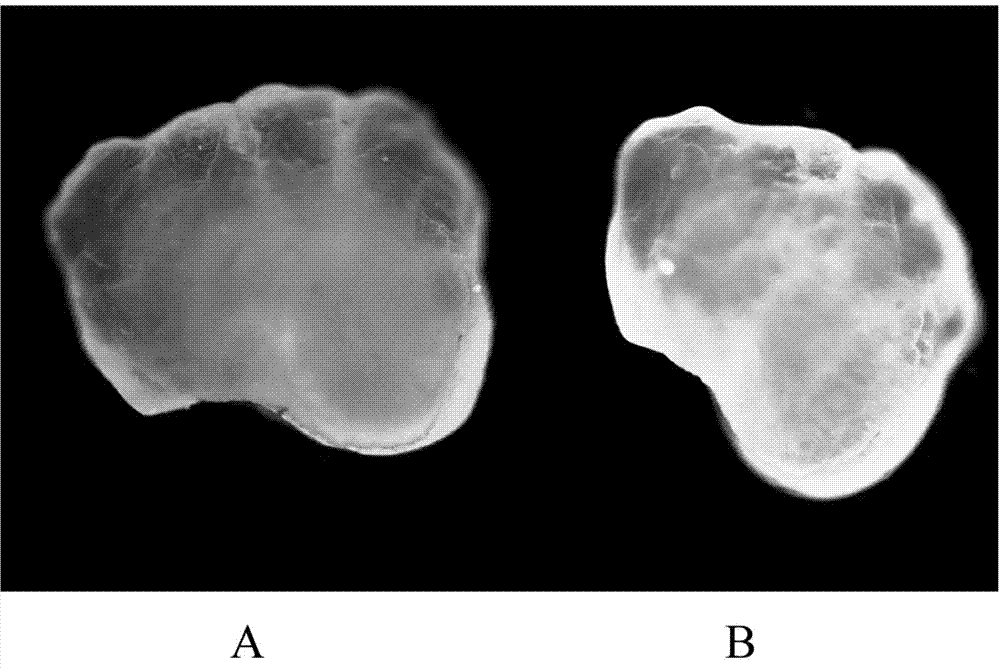Method for marking fish otolith by fluorescent substances
A fluorescent substance, fish otolith technology, applied in application, fish farming, climate change adaptation, etc., can solve problems such as unfavorable release operation, process impact of release and recapture, large fish damage, etc., to avoid high loss rate , Easy to operate, reduce the effect of manpower and material resources
- Summary
- Abstract
- Description
- Claims
- Application Information
AI Technical Summary
Problems solved by technology
Method used
Image
Examples
Embodiment 1
[0018] Marking of silver carp:
[0019] (1) Dissolving tetracycline hydrochloride in water to obtain a tetracycline hydrochloride solution with a concentration of 300ppm;
[0020] (2) Soak the marked silver carp in the solution for 24 hours, and fill it with oxygen;
[0021] (3) When the soaking mark is over, put the fish body in clean water for temporary breeding, and feed it normally every day. After 7 to 10 days, you can take out the otoliths, clean the otoliths with absolute ethanol, and remove impurities on the surface of the otoliths. You can also use xylene After clearing, the otoliths were observed under a fluorescent microscope. It can also be kept in clear water for a while, fed normally, and the otoliths can be taken out for observation at different times. figure 1 It is the marked picture of otoliths of silver carp after soaking for 6 months, A is the control picture, and B is the marked picture; all pictures were taken under the blue excitation light.
[0022] ...
Embodiment 2
[0024] The steps for marking bighead carp are as follows:
[0025] (1) Dissolving tetracycline hydrochloride in water to obtain a tetracycline hydrochloride solution with a concentration of 300ppm;
[0026] (2) Soak the marked bighead carp in the solution for 24 hours, and aerobic;
[0027] (3) When the soaking mark is over, put the fish body in clean water for temporary breeding, and feed it normally every day. After 7 to 10 days, you can take out the otoliths, clean the otoliths with absolute ethanol, and remove impurities on the surface of the otoliths. You can also use xylene After clearing, the otoliths were observed under a fluorescent microscope. It can also be kept in clear water for a while, fed normally, and the otoliths can be taken out for observation at different times. figure 2 It is the marked picture of otoliths of bighead carp after soaking for 6 months, A is the control picture, and B is the marked picture; all pictures were taken under the blue excitation...
PUM
 Login to View More
Login to View More Abstract
Description
Claims
Application Information
 Login to View More
Login to View More - R&D Engineer
- R&D Manager
- IP Professional
- Industry Leading Data Capabilities
- Powerful AI technology
- Patent DNA Extraction
Browse by: Latest US Patents, China's latest patents, Technical Efficacy Thesaurus, Application Domain, Technology Topic, Popular Technical Reports.
© 2024 PatSnap. All rights reserved.Legal|Privacy policy|Modern Slavery Act Transparency Statement|Sitemap|About US| Contact US: help@patsnap.com









